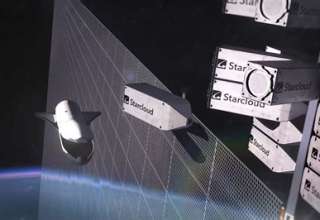 Around the same time that President Obama will begin (24 April) a tour of Asia to promote the United States military strategy of the “Asia Pivot”, the Independent and Peaceful Australia Network will be holding (21-25 April) their inaugural national conference (Canberra Peace Convergence), opposing Australia’s hosting of US troops and bases. Alongside this US Pivot towards Asia (meaning China) is the economic aspect, the Trans Pacific Partnership Agreement that Obama is also pushing.
Around the same time that President Obama will begin (24 April) a tour of Asia to promote the United States military strategy of the “Asia Pivot”, the Independent and Peaceful Australia Network will be holding (21-25 April) their inaugural national conference (Canberra Peace Convergence), opposing Australia’s hosting of US troops and bases. Alongside this US Pivot towards Asia (meaning China) is the economic aspect, the Trans Pacific Partnership Agreement that Obama is also pushing.
US boosting military domination in Asia Pacific
Presently more than 300 US military bases and installations are operating in the Asia Pacific. By 2020 60 per cent of the US military will be based in the Asia Pacific region. Australia, Japan, Guam, Philippines, Singapore, South Korea and Taiwan currently host US bases. Joint military exercises are held with all of the above countries and also Thailand, Malaysia and Myanmar.
The Pentagon has committed to deploying 60 per cent of its nuclear-armed and high-tech navy to the Asia Pacific. According to the New York Times, this includes “six aircraft carriers and a majority of the navy’s cruisers, destroyers, littoral combat ships and submarines. [and] an accelerated pace of naval exercises and port calls in the Pacific.”
This is the greatest military concentration in the Asia Pacific region since world war two.
Trans Pacific Partnership seeks corporate domination
The TPP is driven by US government multinational corporations.
12 countries are participating in the TPP negotiations – Australia, Brunei, Chile, Canada, Japan, Malaysia, Mexico, New Zealand, Peru, Singapore, United States and Vietnam.
More than 600 of some of the world’s largest corporations and a handful of government representatives are drafting the TPP, including Exxon, Mobil, Bank of America, Monsanto, GMH, Ford, Wal-Mart, Cargill, pharmaceutical corporations, Boeing, Lockheed Corp, etc. However, the TPP is kept secret from the public and most politicians.
Opinions about the US military “Pivot” and “TPP” from across the political spectrum.
“One of the most important tasks of American statecraft over the next decade will be to lock in a substantially increased investment – diplomatic, economic, strategic, and otherwise – in the Asia-Pacific region…by forging a broad-based military presence.”
Hilary Clinton, former US Secretary of State, announcing the “America’s New Pacific Century” and US military pivot, November 2011.
“The hidden hand of the market will never work without a hidden fist – McDonald’s cannot flourish without McDonnell Douglas, the builder of the F-15. And the hidden fist that keeps the world safe for Silicon Valley’s technologies is called the United States Army, Air Force, Navy and Marine Corps.”
Thomas Friedman, New York Times columnist
“It is an old story that the military force, either from abroad or within the country, is one of the instruments for multinational corporations. National armies and military alliances have to assure that the interest of multinational corporations, the recolonisation of the world, are meet first.
Barbara Lochbihler, Women’s International League for Peace and Freedom
No US bases and troops, an independent foreign policy builds peace in the region.




